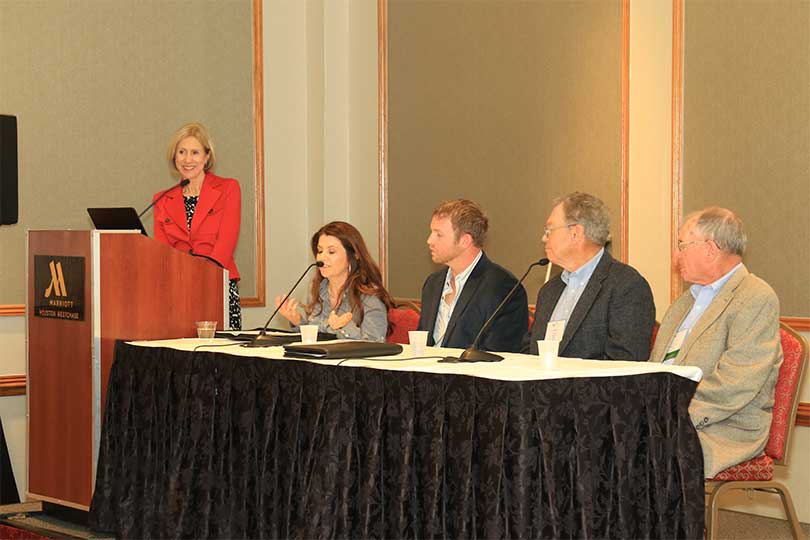By Jennifer Dorsett
Field Editor
A disconnect often exists between the farmer who grows the crops and the consumer buying the food in the grocery store. At a recent conference focused on nutrition and food, farmers and ranchers worked to bridge that gap through conversations and panel discussions.
The Texas Academy of Nutrition and Dietetics held its annual conference in Houston in mid-April. There, nutritionists and dietitians learned more about modern agriculture from Texas farmers and ranchers.
Texas Farm Bureau (TFB) members Scott Savage of Matagorda County, Don Smith of Hopkins County, Marie Smith of Atascosa County and Neil Walter of Coryell County participated in a panel discussion on farming facts and myths.
“This was a good step in getting the story of modern agriculture out to people who are leaders at getting nutritional information to the public,” Walter, a fifth generation farmer who grows row crops and raises cattle, said. “We shouldn’t be afraid to tell our story. We have nothing to hide and much to be proud of.”
Questions for the farmers and ranchers covered a wide range of topics including free-range chickens, genetically modified organisms, soil health and information on organic and conventionally grown crops.
Savage, who grows organic and conventional rice on the Texas Gulf Coast, fielded many of the questions regarding farming methods. He discussed the differences between the two growing methods and explained that his family’s choice to grow some organic crops was a business decision, not based on nutritional quality. He also talked about water usage for rice.
“I was expecting more questions about GMOs, but maybe we’re all finally getting on the same page,” Savage said. “I appreciated the opportunity to share my family’s farming story with an audience that we hadn’t connected with before.”
The nutritionists and dietitians learned more about what livestock are fed and animal care on dairies and ranches.
Don Smith has been a rancher and dairy farmer for more than 50 years and is the third generation of his family to raise cattle.
He noted the audience was surprised when he talked about food byproduct efficiencies in modern agriculture. Many byproducts of food made for human consumption can also be used for livestock feed, including misshaped candy bars and stale corn chips.
He encouraged the audience to reach out to checkoff programs or farm and ranch groups for nutritional information on specific agricultural products.
But one panelist was also able to connect with the crowd on an educational level. Marie Smith is a registered dietitian nutritionist who had a 15-year career in dietetics before ranching fulltime.
Smith said she was initially reluctant to get into agricultural advocacy because she thought the public might be opposed to her family’s traditional ranching practices. But Smith said she’s found people are looking to better understand the process and make informed decisions.
“I was excited that we made that connection with the audience,” she said. “We’re just families feeding families.”
Agricultural advocacy, like the panel discussion, has helped modern agriculture reach new audiences. Other efforts include TFB’s Our Food video, which was played during the conference.
The conference was an opportunity for outreach, conversations and to build relationships with different communities—the ingredients to help better understand agriculture and food.

